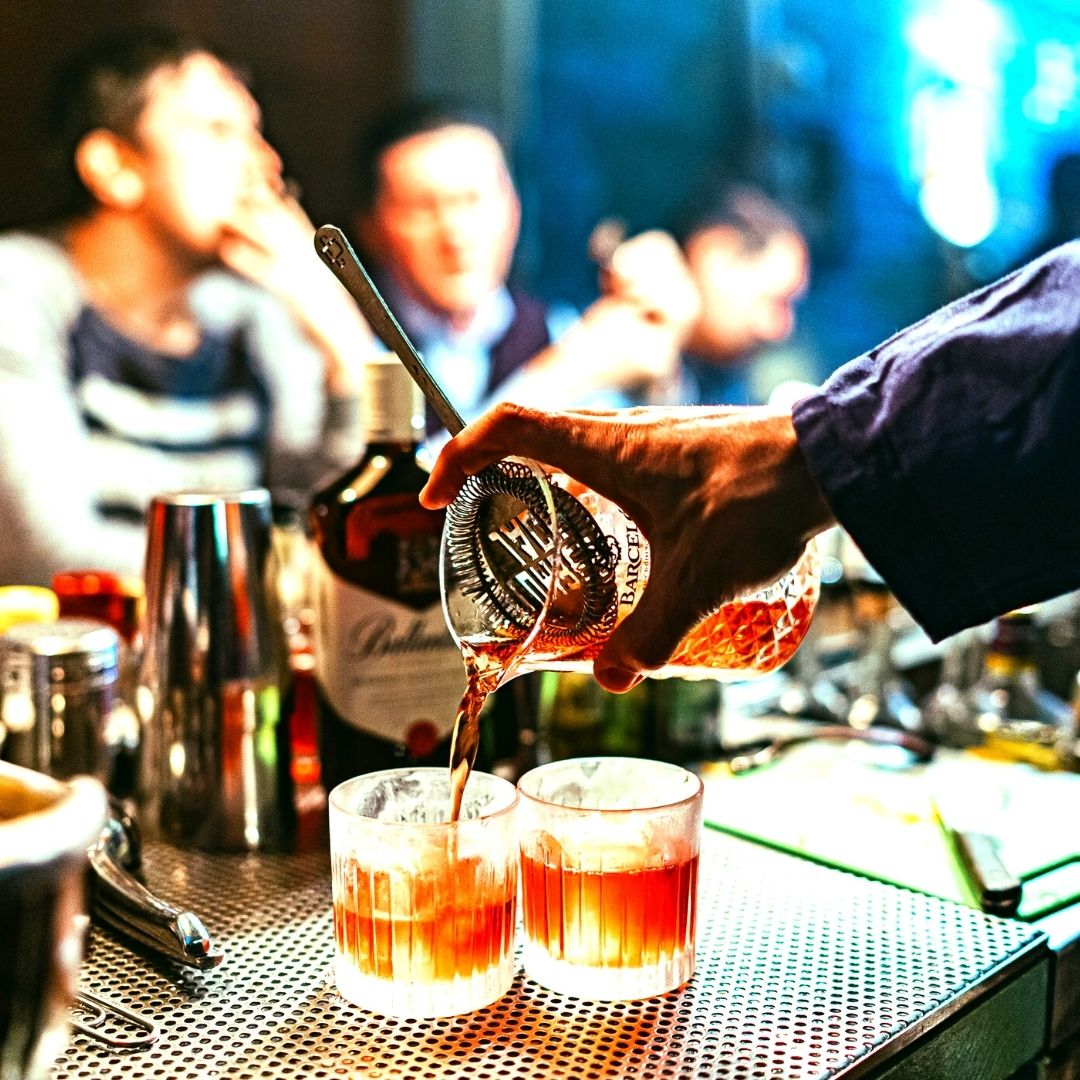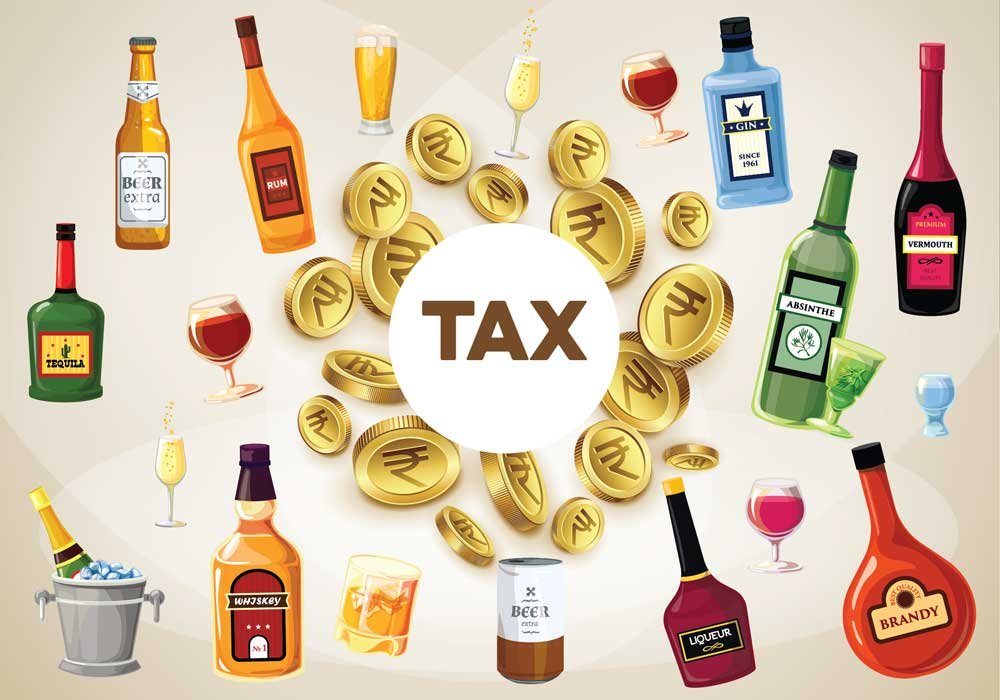Alcohol Gives “High” To Revenue In India: Fastest Growing Market For Liquor
According to recent statistics, India is now one of the alcohol-based beverage industries' fastest-growing markets.
Alcohol gives “high” to revenue in India
One of the world’s most rapidly expanding marketplaces for beverages, India’s liquor business, has recently seen unheard-of expansion. The Indian Council for Research on International Economic Relations (ICRIER) anticipated that the market for liquor related beverages in India will be worth 52.5 billion USD (or around INR 4 lakh crore) by 2020. Between 2020 and 2023, the market is anticipated to expand at a CAGR of 6.8%. It has been claimed that the third-biggest liquor market throughout the entire globe is found in India.
In India, the rate of liquor use has increased during the past three decades. The quick recovery of liquor during the epidemic demonstrates the enormous domestic market. Due to India’s rapidly increasing population, 13 million persons of legal drinking age are created each year; of these, a minimum of 3-5 million will ultimately use liquor, indicating a significant rise in the country’s overall liquor consumption percentage.
Due to the liquor industry‘s rapid expansion, patterns of drinking are drastically altering, with new, unexpected trends appearing every year. According to global data, India is the country that consumes the most whiskey. India is also the ninth-largest liquor user in the entire globe in terms of volume of intake.

One out of every 7 Indian rupees generated by states in 2022–23 is anticipated to originate from state excise charges, particularly liquor, which represents a rising percentage of state tax income. Hence, without drinkers, governments would have to take out loans to cover all of their social welfare costs or pay only half of their pension obligations!
Statista Study 2023 on Revenue produced by Alcohol in India
In 2023, the marketplace for alcoholic beverages will generate US $49,580.00m in revenue. The market is anticipated to expand by 6.53% yearly (CAGR 2023-2027). Spirits constitute the business’s largest sector, with the total market value projected to reach US$ 34,470.00m in the year 2023. In terms of worldwide comparison, China will create the largest income ($336.40 billion in 2023). In 2023, individual earnings of US $34.92 are produced based on population statistics. By 2023, online purchases in the industry for liquor and its various types will account for 0.5% of the overall revenue.
In the market for drinking liquor, consumption away from home (such as that seen in bars as well as restaurants) will account for 8% of the total amount consumed and 11% of expenditure by 2027. By 2027, the amount of alcoholic beverages is anticipated to reach 14,100.00 ml. In 2024, this marketplace is additionally anticipated to rise in volume by 3.9%. Further in 2023, it is anticipated that the market for such beverages would have an average amount per person of 8.58L.
Statista Study 2022 on Revenue produced by Alcohol in India
Alcoholic beverages are expected to earn US$ 47,500 million (£39,133 million) in sales in India in 2022, according to information from a Statista analysis. The industry is also expected to rise by 8.86% annually (CAGR 2022-2025). The data collected shows how Indian governments requested permission for liquor outlets to resume operations during the epidemic and how, as a result, on the second working day upon opening back up, Karnataka recorded the highest ever one day booze sales, totaling INR 197 crore (£19.7 million). In a similar vein, unprecedented sales were also seen in Delhi as well as Uttar Pradesh.
Additionally, since customers got accustomed to the flavor of higher-priced drinks as a result of a rise in consumption at home during lockdowns, the premiumization tendency also expanded simultaneously. Customers therefore preferred boutique and more expensive options. After the store reopened, purchases of more costly brands increased as well. Local sources indicated that the total amount of young individuals living in cities was increasing, which further fueled the need for better alternatives of high-quality liquor.

In accordance to the International Wine & Spirits Record (IWSR) Drinks Market Analysis, whiskey brands are the most frequently consumed beverages in India along with the country being the biggest consumer of whisky globally. Furthermore, recent research conducted by the Indian Council for Research on International Economic Relations (ICRIER) along with legal firm PLR Chambers revealed that greater international traveling has resulted in higher exposure to brands coming from foreign markets among Indian consumers.
Through excise rules, each state government in India has influence over the beverages sector’s supply network in addition to liquor manufacturing and distribution. As a result, the Indian beverages business is generally open to international investment, even if several Indian governments grant subsidies to indigenous enterprises, as shown in the states of Maharashtra as well as Karnataka for wine.
In most Indian states, wherein the sales of liquor have also assisted the governments to enhance revenue from taxation (SOTR) revenues, a blossoming business which is already amongst the biggest 3 income generators has emerged. According to claims, the north-eastern states contribute even more to the exchequer from taxes on liquor than the rest of India, although the state of Arunachal Pradesh has the greatest percentages of liquor usage amongst men (53%) and women (24%).

The Delhi administration forecasts that liquor purchases would generate INR 9,454 crore (£945.5 million) in revenue year 2022–2023; INR 700 crore (£70 million) of that will come from domestic spirits brands, while INR 8,754 crore (£875.5 million) will come from imports. This is an increase of 57.6% above INR 6,000 crore (£600 million) it had earlier earned from the sale of liquor in the prior years.
According to the ICRIER, by 2030, 26% of Indian consumers would upgrade to higher-end names, whereas 24% will switch to new kinds and types of liquor, indicating that the industry is still evolving. However, fifty percent of Indian consumers are going to keep buying more items in the exact same genre of liquor.
Excise duty on liquor intended for human use and consumption is governed by Entry 51 of List II, meaning the State List, according to the 7th Schedule in Constitution of India. Since 1977, inter-governmental payment transfers, levies, and user fees have climbed as a percentage of state general revenue, while taxes have decreased as a percentage. States tried to raise income from non-tax avenues, like substantial hikes in public college tuition, thus income coming from charges, fees for usage, and other sources climbed dramatically from 11% in 1977 to 18% in 2002.
Among the primary avenues of “own tax earnings” for each state, with the notable exceptions of Gujarat and Bihar, which forbid liquor usage, comes from the production as well as selling of liquor.
Liquor excise taxes were examined for the RBI study “State Finances: A Study of Budgets of 2019-20,” which found that they make up approximately 10–15% of most states’ own tax income. The value-added tax (VAT) as well as any other costs for stamps, weights, and measures that may apply to liquor were not taken into consideration when calculating this estimate.
Therefore, it is likely that actual liquor manufacturing and sales revenues were greater. The total amount collected from state excises by all states in fiscal year 2022 was INR 2,05,363 crore, an increase from INR 1,72,794 crore in fiscal year 2021.
States often impose excise taxes on the production and selling of liquor. Certain states also levy VAT, like Tamil Nadu. States further impose extra taxes on imported foreign liquor, a transit fee, and costs for label as well as brand registration. A few governments, like Uttar Pradesh, have implemented a “special duty on liquor” in order to raise money for specific uses, including the upkeep of stray cattle.
States relied on their revenue from selling of liquor during the Covid-19 pandemic to offset the additional costs. The Reserve Bank of India‘s State Finances analysis for 2022–23 also notes that while the state’s excise revenues grew as a result of higher liquor taxes, the state’s revenue collections decreased in 2020–21 owing to the pandemic-induced recession.
Liquor has been specifically left out of the scope of the Goods and Services Tax (GST) rules. One justification underlying the practice of not applying the provisions of GST was to protect states’ earnings through selling of liquor.
Given that additional transactions in products and services, in addition to both private and public transportation, will remain limited, selling of liquor serves as one of the simplest methods for state governments to collect cash. However, given its negative influence on both individuals and well-being, as a whole, measures should be carried out to decrease its use in any manner feasible.





